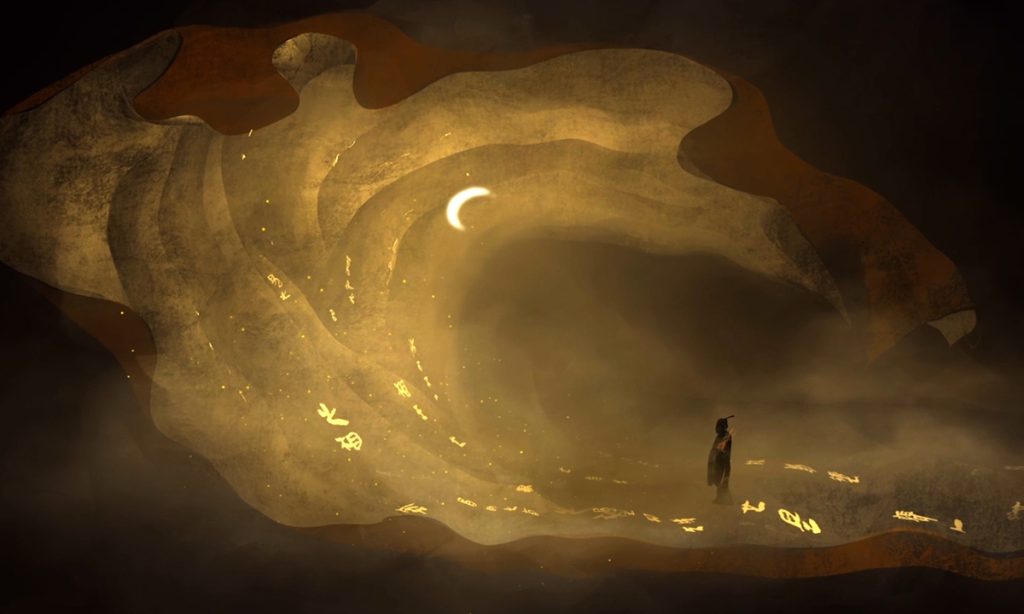New doc decodes China’s Mawangdui Han Tombs, bridges dialogue spanning 2,000 years

She is called China's Sleeping Beauty as the 2,200-year-old lady looks nearly as good as when she was buried after she died at the age of about 50, in China's Western Han Dynasty (206BC-AD25).
The tombs, which contain the well-preserved remains of the lady, Xin Zhui, also known as Lady Dai, and 3,000 artifacts, which were discovered in 1971 in Mawangdui, Central China's Hunan Province have been seen as among the most important archaeological findings in the 20th century.
As 2024 marks the 50th anniversary of the evaluation of the archaeological excavation of the Mawangdui Han Tombs, a new documentary that provides a portal into the life of the Han Dynasty for young audiences started being aired on Mango TV on Monday.
"The charm of the project not only lies in the well-preserved Xin Zhui and her family's story, but also the continued connection between the ancient Chinese and us," Li Dongshen, the documentary's director, told the Global Times.
"The early Chinese people's understanding of life and its relationship to the world as well as the cultural impact from the early texts found in the tombs and unique versions of Chinese philosophical classics like I-Ching and Tao Te Ching… all matter to today's world."
Life of 2,000 years ago
The excavation of the Mawangdui site started in 1970s, and three tombs dedicated to the family of Li Cang, the Marquis of Dai, a nobleman who boasted significant power in the Western Han Dynasty were discovered.
Buried in a separate tomb to Li Cang was his wife Xin Zhui,with thousands of artifacts from the ancient Han Dynasty, such as delicate silk manuscripts, lacquered vessels, and herbal medicines made from cinnamon, magnolia bark, and peppercorns.
According to the director, more than 3,000 cultural relics buried underground for over 2,000 years present a panoramic view of the daily life of the Xin Zhui family. There are many types of dishes recorded on the bamboo slips, and we can also see the dining preferences of the Xin Zhui's family from more than 2,000 years ago. The three characters "Jun Xing Shi" written on small lacquer plates, lacquer ear cups and other cultural relics, meaning "having a good meal" reflect the ancients' attitude toward life. The daily emphasis also conveys the blessing of "eating well" from people more than 2,000 years ago to modern young people who also love food; the many cosmetics unearthed from Tomb No. 1 reveal that people have never stopped pursuing beauty since ancient times.
Xin is thought to have lived a wealthy lifestyle with private musicians and access to a variety of imperial foods, including various types of meat. Most of her clothes were made of silk and other valuable textiles, and she owned many cosmetics.
From 3,000 to 26,937
The Hunan Museum announced on August 13 that the collection of artifacts unearthed from the Mawangdui Tombs includes a total of 26,937 items, covering three primary categories: Lacquerware, textiles, as well as bamboo and silk manuscripts.
Among the unearthed artifacts, 1,017 pieces of lacquerware were cataloged, with 869 appearing to be very well-preserved. The textile collection, predominantly silk, includes 24,490 items, 212 of which are intact, while the remaining are fabric fragments. Additionally, 1,430 bamboo and silk manuscripts were identified, including silk books and paintings, wooden tablets, and bamboo slips.
Initial reports, published in October 1973 and July 2004, documented over 3,000 artifacts from the tombs. The leap from "over 3,000" to 26,937 artifacts highlights the advancements in research methodologies and technological capabilities in the field of archaeology.
The museum also released a 3D digital image of Xin Zhui in May as her body was found to be intact and in a remarkable state of preservation. Her skin remained moist, her subcutaneous soft tissue has retained its elasticity, and some joints are still movable. Even her eyelashes are still in place and the lines on her fingers and toes are discernible, leading to the estimation that she was about 50 years old when she died, says Duan Xiaoming, curator of the Hunan Museum.
High technology means including CG tools introduced in the documentary to display these findings and the achievements. Director Li said that under the high-definition lens, the textures and color details on the silk artifacts emerge vividly, and the movements of auspicious animals and gods are clearly discernible.
Compared with the traditional museum viewing perspective, the documentary presents more vivid and rich details, bringing the audience a viewing experience that goes beyond the physical object. It is through such innovative shooting techniques that the documentary perfectly integrates documentary shooting, painting, and CG special effects, uses the power of science and technology to amplify the beauty of cultural relics, and turns the entire museum into a large studio full of creativity and imagination.
Young perspective
When filming in the museum for dozens of days, the director said the museum is like a studio, which has not only recorded the life of the Xin Zhui family and the philosophy of ancient Chinese, but is also a witness to young people's love for museums and their cultural confidence.
As the documentary starts with the scene of the narrow elevator in the museum, the audiences open a tour route as the wisdom of ancient and modern times runs through. "Upward, it is the day and night over 2,000 years ago; downward, it is the undisturbed dream."
Director Li Dongshen told the Global Times that Japanese architectural designer Arata Isozaki drew inspiration from the Mawangdui Han Tombs and Chinese culture and incorporated it into the design of the new museum.
"I really hope to have a personal dialogue with the late designer as he had a very good understanding of Chinese culture and the understanding of life and death," added Li, who was known for his documentaries series including the China and Hexi Corridor.